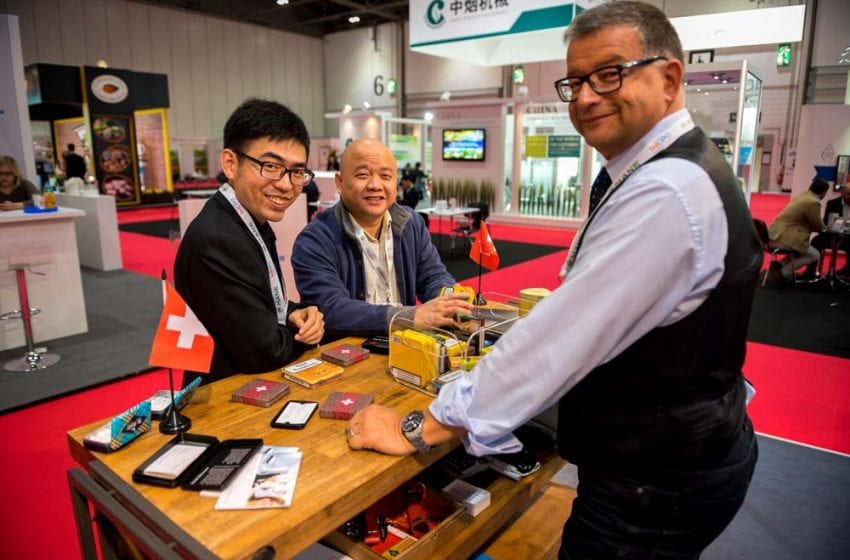The human factor

Why live events continue to matter even in an increasingly digital world.
TR Staff Report
Despite the rapid evolution and accepted benefits of virtual trade fairs (VTFs), reports of the traditional “live” events’ death have been greatly exaggerated. As preparations continue for TABEXPO 2019, which will be held in Amsterdam this November, we looked at some of the reasons why “full-bodied” business gatherings continue to survive and thrive.
VTFs have been around since the mid-1990s. For many companies, especially small and medium-sized enterprises, the benefits are clear: Virtual events are almost always cheaper, easier to plan and set up, and more convenient for visitors to attend, regardless of their locations. All you need is a computer or a mobile device with an internet connection. There are obvious savings in staff time, transport and accommodations.
In theory, every business-savvy organization should have junked its banners and booth equipment by now and become fully virtual. So why are there still over 10,000 trade fairs and events annually all over the world?
According to the 2019 Oxford Economics and Events Industry Council report, in 2018 exhibitions alone generated $136.9 billion in direct spending worldwide, with almost half of that expenditure in North America. Everything from building materials and beauty products to food and fashion appears to get its “15 minutes of fame” under the bright lights of a bustling exhibition center somewhere in the world. In an industrywide report commissioned in 2018 by Bizzabo, a New York-based global leader in event software, 84 percent of business leaders responding believed that in-person events were a critical component of their company’s success.
Product-focused businesses, including those in the tobacco and nicotine industry, are particularly likely to prefer a live exhibition. Food and drink, textiles, jewelery and many other industries need live visitors to see, taste, smell and touch these types of products in order to gauge quality and weigh “wantability.”
But there is an even deeper motivation, and Aristotle nailed it centuries ago: “Man is by nature a social animal,” he said. In marketing psychology, it’s called “propinquity.” Potential customers interacting with your brand in real time, face to face with another person, are more likely to build rapport with the brand and go on to establish a real relationship. Research has also shown that people value a product more highly if they are physically in the same space with it.
Perception is also important—miss a trade show and rumors might begin to circulate that your company is not in buoyant health. The “grapevine” also flourishes at live events, with chance meetings and informal conversations often providing gems of information that might not be elicited on a conference call via Skype or set down in an email.
In truly global businesses such as tobacco and nicotine, the personal connection and subtle cues of body language can leap across language and technology barriers. “There’s an energy you feel when you walk into a busy exhibition space,” says Barbara Hicks, director of TABEXPO 2019 and several previous TABEXPO events. “People are moving around, talking, sharing; that buzz isn’t there when communicating through devices.” Friendships forged over decades and across continents are still common in these industries, and many visitors come to keep up these connections.
TABEXPO 2015 in London filled over 5,000 meters of exhibition space, featuring 114 traditional tobacco companies and 42 e-cigarette and next-generation product purveyors.
Its accompanying two-day congress, which featured headline-making speakers, attracted high-quality visitors. TABEXPO 2019 in Amsterdam will have the same high-potential atmosphere. Shaking hands, exchanging greetings, making eye contact, talking about place, people and products, chatting over coffee or a glass of wine. This is the global marketplace in action—a true meeting of minds and motivations.
Long live the live event!




















